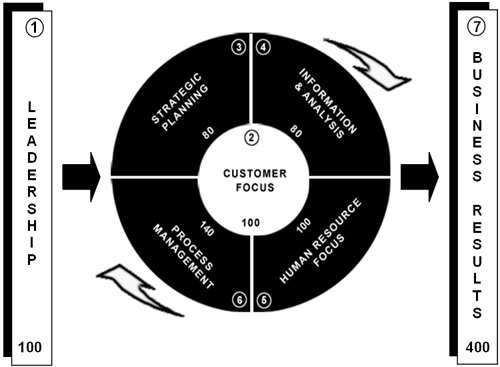What is the IMC Ramkrishna Bajaj National Quality Award? What is its purpose? How does it relate to you and your company?
The first and most obvious thing that must be said about the RBNQA is that you cannot win it with a single achievement. You cannot bring home the gold by scoring high in only one of the seven categories of Leadership, Customer Focus, Strategic Planning, Information and Analysis, Human Resource Focus, Process Management, and Business Results. Achievement under the RBNQA must be total.

In 490 B.C., the Greek runner Pheidippides ran the original marathon (150 miles in two days) to alert Sparta about the arrival of Persian ships, and dropped dead after running back to Athens to deliver news of the Greek victory. Pheidippides is a hero forever in the annals of one-shot deeds. But if there was a RBNQA Olympics, Pheidippides might not even make it to the semi-finals.
The RBNQA is conferred not for suicidal eleventh-hour individual heroics, but for company-wide quality management. That immediately makes RBNQA less exciting than the Olympic Games, at least as a spectator sport. But, for companies, RBNQA represents an approach that more and more companies are turning to in order to create new jobs, new markets, new customers, new competitiveness and new profits. Company-wide quality management requires that everyone in an organization work together toward these common objectives. Managers who try to do it all by themselves may, like Pheidippides, exert themselves remarkably – but their final moments may not be so glorious.
Winning the RBNQA is, indeed, a remarkable victory. But the real winners of the RBNQA process are all who put it, and its philosophy of company-wide quality, to work for them. Hundreds of companies in the manufacturing and service sectors have adopted this model to attain business excellence. One hundred examiners have been certified, over the past five years, to assess the quality of management performance of applicant companies.
| Past Winners |
| 1998 | Vikram Cement |
| 1999 | HDFC |
| 2000 | Thai Acrylic Fibre |
| Infosys Technologies |
| 2001 | Indo Gulf Corporation |
| Satyam Computer Services |
Much of the wrangling in the field of quality has been about terminology. QC (quality control), QA (quality assurance), TQC (total quality control), TQM (total quality management) - the list of quality acronyms, and the separate ideologies governing each, constitute a confusing curry of ‘isms’ for the innocent onlooker.
Quality is something we all think we understand; it is almost too simple for words. A quality car. A quality individual. An inexplicable quality. But it means different things to different people. Different quality movements have focused on different quality aspects or dimensions of quality. The current definition in vogue is ‘six sigma’, which will also pass as others have done so before it. The definition by Dr J M Juran is the closest to business application: Fitness for Use.
People in training, marketing, engineering and service all have their own specific notions of what quality is, where it begins and ends, and how it may be measured. As the quality movement has grown, defining quality has only become more difficult. The RBNQA framework itself makes no effort to define quality. According to me, a meaningful definition is simply not possible.
On the other hand, the RBNQA does define company-wide quality management by identifying a full landscape of areas where organizations will want to be proficient in order to ensure their success and continual improvement. What path an organization takes to develop those proficiencies is left to the individual organization. In summary, the following essentials are embodied in the RBNQA criteria:
- Customers define quality.
- Senior corporate leadership must create clear values and build them into company operations.
- Companies must develop goals, as well as, strategic and operational plans to achieve quality leadership.
- Excellent quality evolves from well-designed and well-executed systems and processes.
- Design quality and error prevention must be key elements of quality systems.
- Operations and decisions of the company must be based on facts.
- Continuous improvement must be integrated into the management of all systems and processes.
- Shortened response time for all operations and processes must be part of quality improvement efforts.
- Companies must communicate quality requirements to suppliers and work to elevate their performance.
- All employees must be appropriately trained, developed, and involved in quality improvement activities.
- The value of the Late Shri Ramkrishna Bajaj must form an integral part of executive leadership.
- Companies must plan to create an impact on society in the areas of education, woman’s welfare, rural development, rural healthcare and business ethics.
CREDITS: Suresh Lulla, Founder & Mentor, Qimpro Consultants Pvt. Ltd.